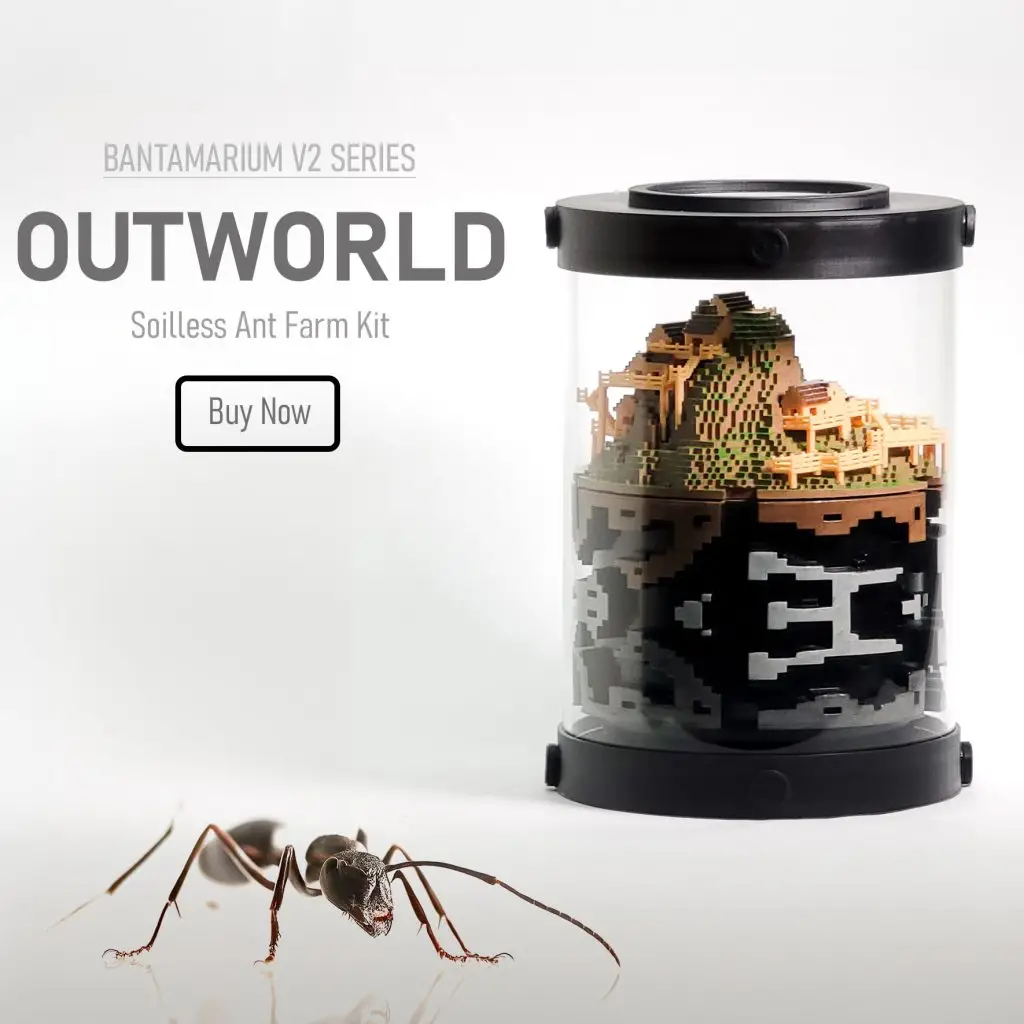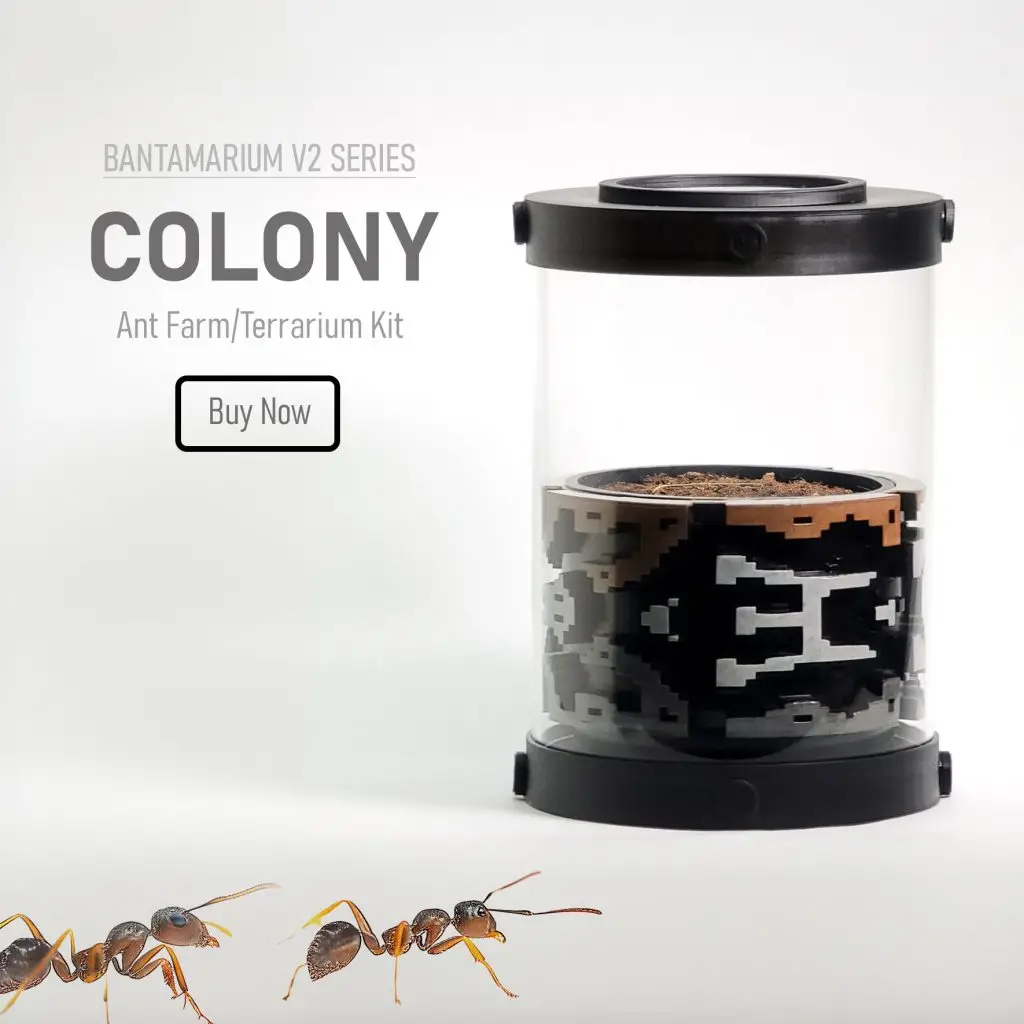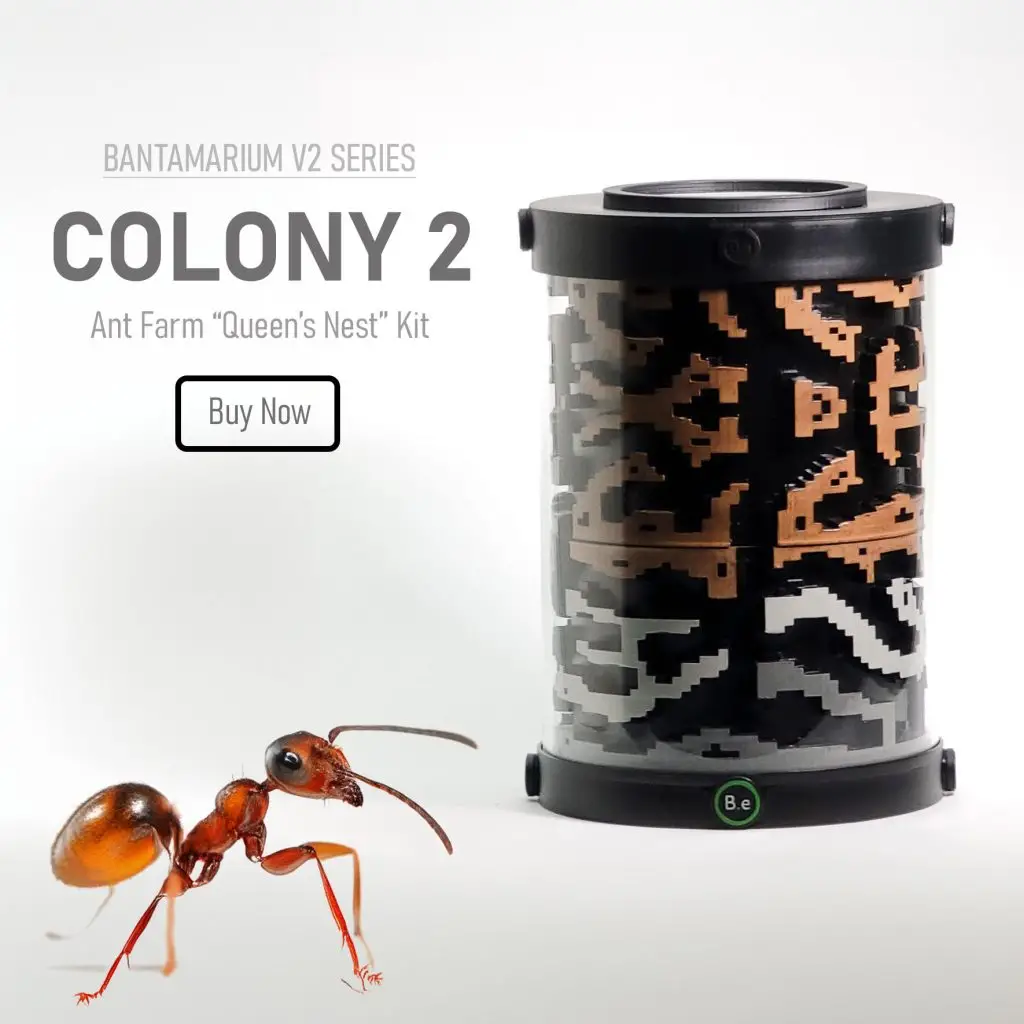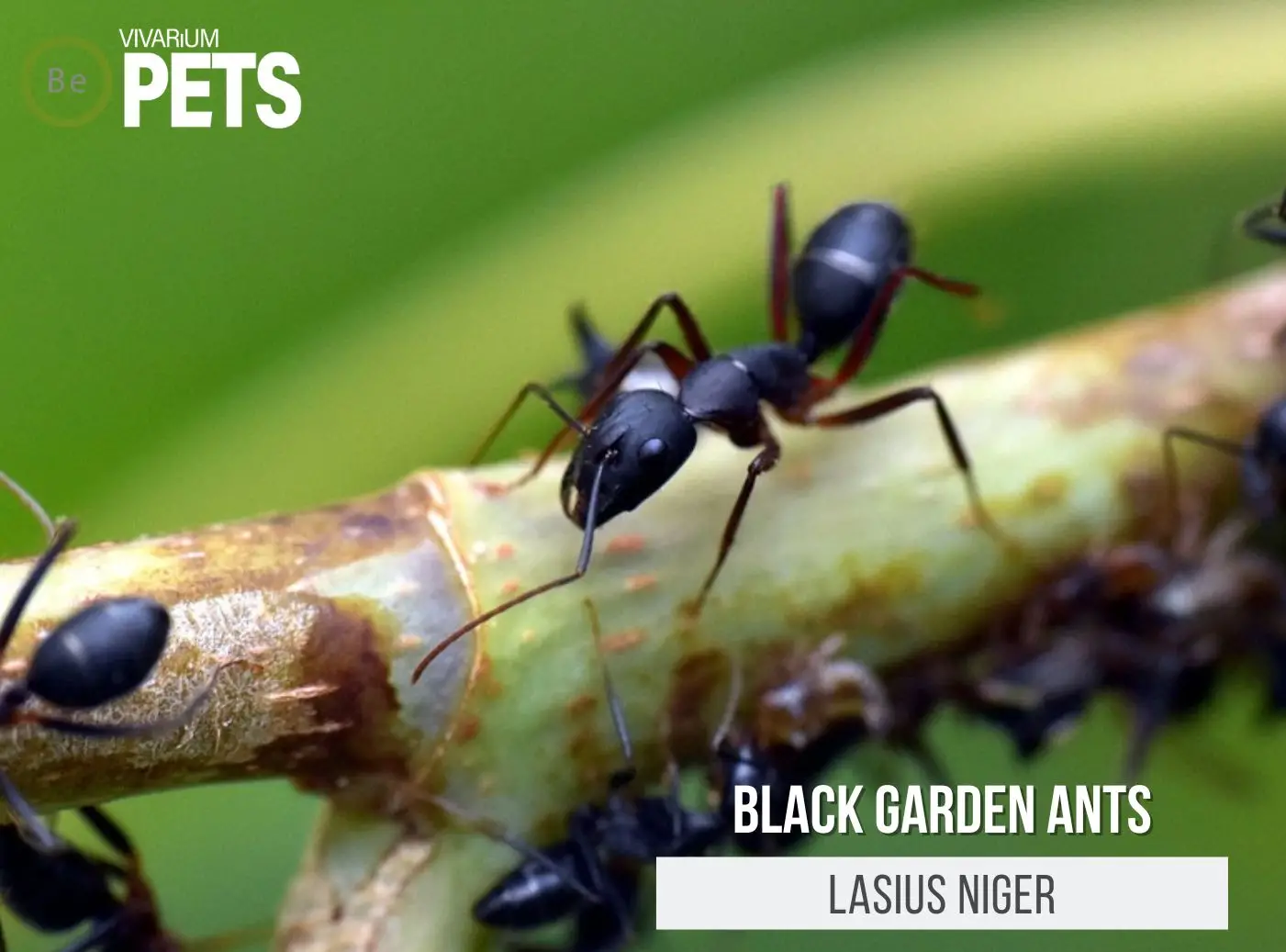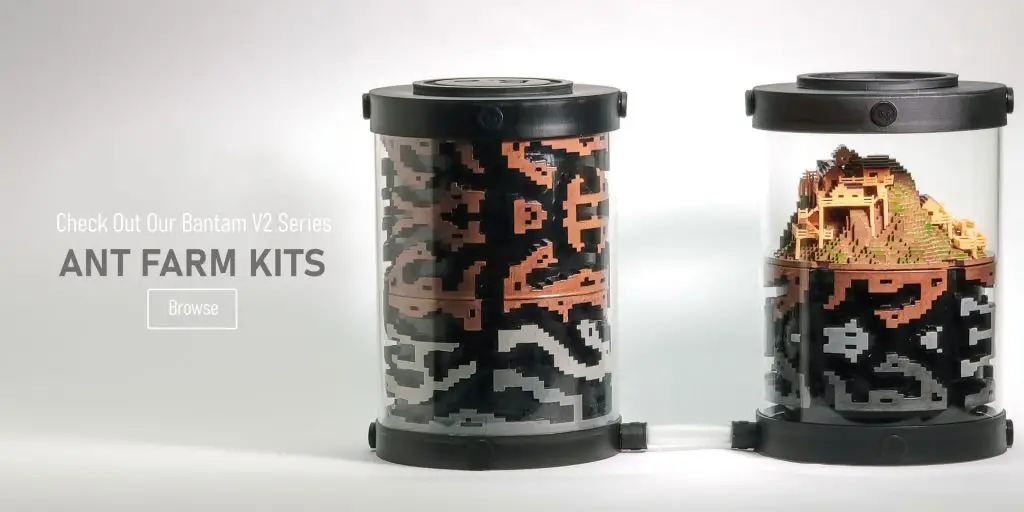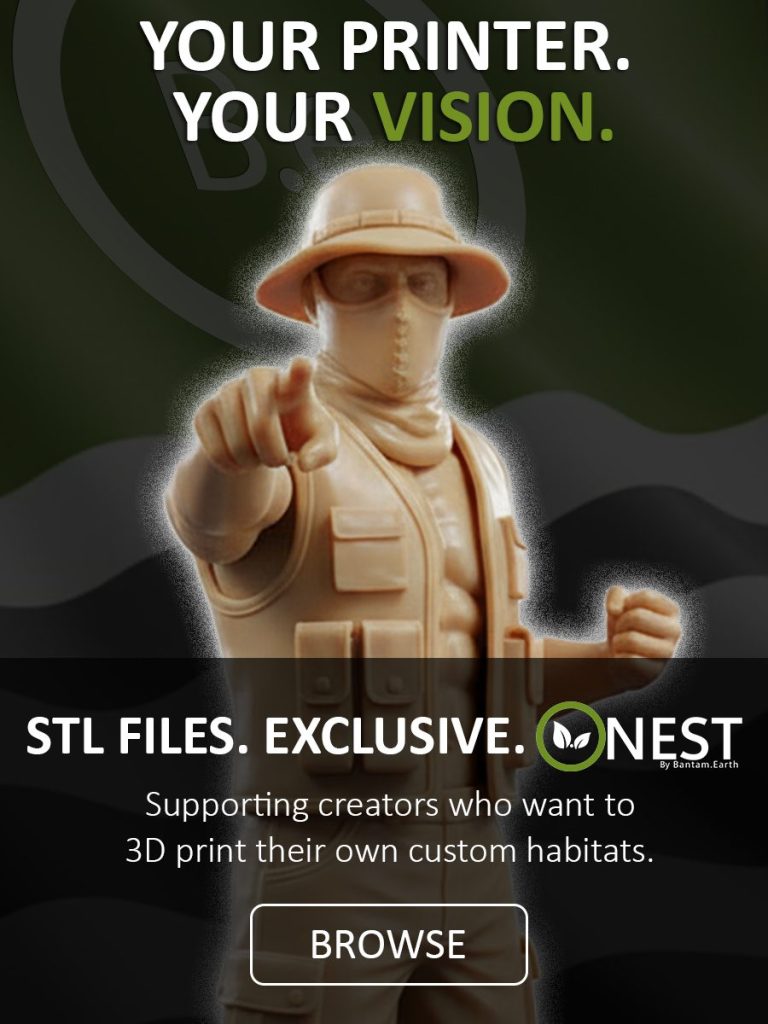Ants are captivating creatures that can bring a unique dynamic to your terrarium.
As one of the most organized and resilient species, pet ants are not only easy to care for but also offer an intriguing glimpse into the world of miniature ecosystems.
Whether you’re new to the hobby or looking to add a new dimension to your existing setup, introducing ants into your enclosure can be a rewarding experience.
In this guide, we’ll explore everything you need to know about choosing the right ants, setting up the perfect environment, and ensuring your pet insects thrive in their new home.
Table Of Contents:
ToggleWhat Are Ants?
Ants are social insects belonging to the family Formicidae, known for their complex and highly organized colonies.
With over 12,000 species worldwide, ants have adapted to nearly every environment on Earth, except for Antarctica.
These insects are easily recognized by their three-part bodies, which include a head, thorax, and abdomen, as well as their distinctive antennae and mandibles.
Ants are incredibly diverse in behavior, diet, and habitat, ranging from leaf-cutting ants that cultivate fungus to predatory army ants that hunt in large groups.
Their ability to work collectively and communicate through chemical signals makes them one of the most successful and fascinating groups of animals in the insect kingdom.


Benefits Of Ants As Pets
Having ants as pets offers a unique and rewarding experience, especially for those interested in observing social behavior and complex ecosystems.
Ants are relatively low-maintenance compared to other pets, requiring minimal space and resources while providing endless opportunities for learning and engagement.
They are fascinating to watch as they build intricate tunnels, forage for food, and care for their young, offering a glimpse into their highly organized and cooperative societies.
Additionally, keeping ants can be an educational hobby, teaching responsibility and the importance of environmental balance, while also being an accessible entry point into the world of entomology.
Create an ideal habitat for your ant colony with our Customizable Ant Farm Terrarium Kits, which include everything you need to get started.
Best Types Of Pet Ants
When selecting pet ants, it’s important to consider several key factors to ensure you choose a species that aligns with your interests and care capabilities.
First, consider the size and temperament of the ant species. Next, think about the colony’s size requirements and growth rate, as some species can grow rapidly and require more vivarium space and resources.
The environmental needs of the ants, such as temperature, humidity, and substrate preferences, are also crucial; selecting a species that thrives in your local climate or within the conditions you can provide will make care easier.
Furthermore, consider the availability of the ants and any legal restrictions on keeping certain species in your area.
Finally, think about your goals as an ant keeper—whether you’re looking to observe unique behaviors, manage a complex colony, or simply enjoy the novelty of having ants as pets, choosing a species that fits your aspirations will enhance your experience.
Black Garden Ants (Lasius niger)
Black Garden Ants are among the most common and adaptable ant species found in Europe and North America.
They are recognized for their small to medium size and black coloration. These ants are highly social, forming large colonies with a clear division of labor among workers, soldiers, and queens.
They are relatively easy to care for and are well-suited to a variety of terrarium setups due to their hardiness and adaptability.
If you’re looking for more specifics on these types of pet ants, here’s a full care guide on Black Garden Ants (Lasius niger).
Black Carpenter Ants (Camponotus pennsylvanicus)
Black Carpenter Ants are notable for their large size and robust build, with workers ranging from medium to large and exhibiting a glossy black exterior.
Native to North America, these ants are known for their wood-nesting behavior, often creating intricate tunnels within decaying or dead wood.
They are highly structured, with a clear caste system that includes workers, queens, and males.
Black Carpenter Ants can adapt to various environments, making them a versatile addition to terrariums.
If you’re looking for more specifics on these types of pet ants, here’s a full care guide on Black Carpenter Ants (Camponotus pennsylvanicus).
European Acrobat Ants (Crematogaster scutellaris)
European Acrobat Ants are distinguished by their small size and unique appearance, with a distinctive heart-shaped abdomen that they often lift into the air when threatened.
These ants are known for their aggressive defense tactics and ability to form large, complex colonies.
Native to Europe, they are adaptable to a range of environments and can thrive in terrariums with the right conditions.
Their striking appearance and active behavior make them an intriguing choice for ant enthusiasts.
If you’re looking for more specifics on these types of pet ants, here’s a full care guide on European Acrobat Ants (Crematogaster scutellaris).
Pavement Ants (Tetramorium immigrans)
Pavement Ants are small, brown to black ants that are easily recognizable by their unevenly shaped thorax and the fine striations on their exoskeleton.
They are commonly found under stones, pavements, and other urban areas, making them highly adaptable to various environments.
These ants are known for their aggressive foraging behavior and ability to form large colonies. Their resilience and interesting colony dynamics make them a popular choice for terrarium setups.
If you’re looking for more specifics on these types of pet ants, here’s a full care guide on Pavement Ants (Tetramorium immigrans).
Odorous House Ants (Tapinoma sessile)
Odorous House Ants are small, dark brown to black ants known for the distinctive, often unpleasant smell they emit when crushed.
They have a relatively smooth and shiny appearance with a noticeable rounded thorax.
These ants are versatile and can thrive in a range of environments, including urban settings.
Their adaptability and colony structure make them an engaging choice for ant enthusiasts.
If you’re looking for more specifics on these types of pet ants, here’s a full care guide on Odorous House Ants (Tapinoma sessile).
Fire Ants (Solenopsis geminata)
Fire Ants are known for their aggressive behavior and painful stings. They are small to medium-sized ants with a reddish-brown color and a robust, segmented body.
These ants are notorious for their potent venom, which they use defensively.
Their aggressive nature and ability to quickly form large colonies make them an interesting choice for experienced ant keepers.
If you’re looking for more specifics on these types of pet ants, here’s a full care guide on Fire Ants (Solenopsis geminata).
Pharaoh Ants (Monomorium pharaonis)
Pharaoh Ants are small, light yellow to reddish-brown ants known for their high adaptability and persistence.
They are often found in large colonies and can be quite challenging to manage due to their tendency to form multiple nests and their quick reproduction rate.
Their small size and complex social structure make them intriguing for those interested in observing intricate colony dynamics.
If you’re looking for more specifics on these types of pet ants, here’s a full care guide on Pharaoh Ants (Monomorium pharaonis).
Argentine Ants (Linepithema humile)
Argentine Ants are small, light to dark brown ants recognized for their aggressive foraging behavior and ability to form supercolonies.
Native to South America, they are highly adaptable and can thrive in a variety of environments, making them a fun species to observe.
Their large colonies and complex interactions within the nest offer a unique insight into ant behavior and colony dynamics.
If you’re looking for more specifics on these types of pet ants, here’s a full care guide on Argentine Ants (Linepithema humile).
Bullet Ants (Paraponera clavata)
Bullet Ants are known for their impressive size and potent sting, which delivers one of the most painful insect bites in the world.
Native to tropical rainforests in Central and South America, these ants are notable for their striking black appearance and robust build.
Their large, intimidating presence and complex colony structure make them a captivating species for enthusiasts interested in observing their intricate social behaviors.
If you’re looking for more specifics on these types of pet ants, here’s a full care guide on Bullet Ants (Paraponera clavata).
Honeypot Ants (Myrmecocystus mexicanus)
Honeypot Ants are fascinating for their unique ability to store large amounts of liquid food in their distended abdomens, which they use to feed the colony during times of scarcity.
Native to arid and semi-arid regions of North America, these ants are characterized by their pale yellow to orange color and their swollen, honey-filled workers.
Their remarkable adaptation to dry environments and their intriguing feeding behaviors make them an excellent choice for those interested in observing the dynamic life of a colony.
If you’re looking for more specifics on these types of pet ants, here’s a full care guide on Honeypot Ants (Myrmecocystus mexicanus).
Best Type Of Ant Terrariums
When choosing a terrarium for pet ants, it’s important to select one that meets the specific needs of the species you plan to keep.
Various types of terrariums can be suitable, ranging from simple glass or acrylic tanks to more elaborate setups with multiple chambers or tunnels designed to mimic natural habitats.
Formicariums, specifically designed for ants, are a popular choice as they provide optimal viewing and care opportunities, with features like moisture-retaining substrates and escape-proof lids.
Additionally, some ant keepers prefer vertical setups that allow for more complex tunneling, while others might opt for horizontal layouts that offer expansive surface area.
Regardless of the type, it’s crucial to ensure the terrarium is secure, well-ventilated, and easy to maintain.
Create an ideal habitat for your ant colony with our Customizable Ant Farm Terrarium Kits, which include everything you need to get started.
Best Ant Substrate
When choosing a terrarium substrate for pet ants, it’s essential to consider the species’ natural habitat to create an environment that supports their health and behavior.
Sandy loam, a mix of sand and organic material, is often ideal for ants that prefer dry environments, providing proper drainage and burrowing capabilities.
For species that thrive in more humid conditions, a substrate blend containing coco coir, vermicompost, and peat moss can help retain moisture while still allowing for aeration.
Additionally, adding a layer of fine gravel or sand can improve drainage and prevent waterlogging, which is crucial for maintaining a healthy ant colony.
Our Bioactive species-specific soil mixes are specially formulated to meet the needs of various ant species, providing an optimal balance of moisture and nutrients.
Best Plants For Ants
Selecting the right terrarium plants for an ant farm is crucial to creating a thriving, natural environment that benefits both the ants and the overall ecosystem.
Low-maintenance plants like mosses, miniature ferns, and small tropical plants are excellent choices, as they provide cover and create a more natural habitat without requiring intense care.
Plants with shallow root systems are particularly ideal since they won’t interfere with the ants’ tunneling activities.
Consider adding plants that thrive in humid conditions and can help maintain the moisture levels that many ant species need.
The foliage also offers shade and hiding spots, contributing to the overall health and stability of the terrarium ecosystem.
Proper Pet Ant Care
Managing and caring for pet ants in terrariums involves paying close attention to several key factors to ensure a thriving and balanced environment.
Habitat Requirements
The first consideration is moisture and humidity control, which are critical to the health of the ants and the stability of the terrarium.
Different ant species have varying moisture requirements, so it’s important to monitor and adjust humidity levels to match the needs of your specific ants.
Over-watering can lead to mold and fungal growth, while under-watering can cause dehydration and stress among the ants.
A well-draining substrate and occasional misting can help maintain the right moisture balance.
Feeding & Supplementation
Feeding is another essential aspect of caring for pet ants.
Ants have diverse dietary needs depending on the species, but most will thrive on a combination of protein sources like insects or specially formulated ant food, along with carbohydrates from fruits or honey water.
Providing a varied diet ensures that the ants receive all the necessary nutrients for growth and colony development.
Regular feeding schedules should be established, and uneaten food should be removed promptly to prevent mold or attract unwanted pests.
If you’re looking for a more detailed approach to feeding these critters, be sure to check out my ultimate DIY ant food guide. I give a more in-depth explanation of the best foods and my favorite recipe.
Identify & Treat Stress
Finally, maintaining a healthy ant terrarium requires vigilance against diseases and parasites.
Regularly inspect the terrarium for signs of illness, such as unusual behavior, discoloration, or a decline in colony size.
If any issues arise, it’s important to act quickly to isolate the affected ants and treat the problem, whether it be through environmental adjustments or introducing natural remedies.
Keeping the terrarium clean and ensuring proper ventilation can also reduce the risk of disease, making it easier to care for your ants and maintain a vibrant, dynamic habitat.
Conclusion
Creating and maintaining a terrarium for pet ants is a rewarding endeavor that offers a unique window into the tiny world of these industrious creatures.
By carefully selecting the right substrate, plants, and tank mates, and by managing moisture, feeding, and health, you can establish a thriving ecosystem that reflects the natural behaviors and needs of your ant colony.
Whether you’re a seasoned ant keeper or a beginner, the experience of nurturing a miniature ant habitat brings both educational value and a sense of connection to the intricate dynamics of nature.
With thoughtful care, your ant terrarium can flourish, providing endless opportunities for observation and enjoyment.
Create the ideal habitat for your ants with our species-specific soil mixes and Ant Farm Kits. These products provide everything you need for a successful and thriving ant colony.

